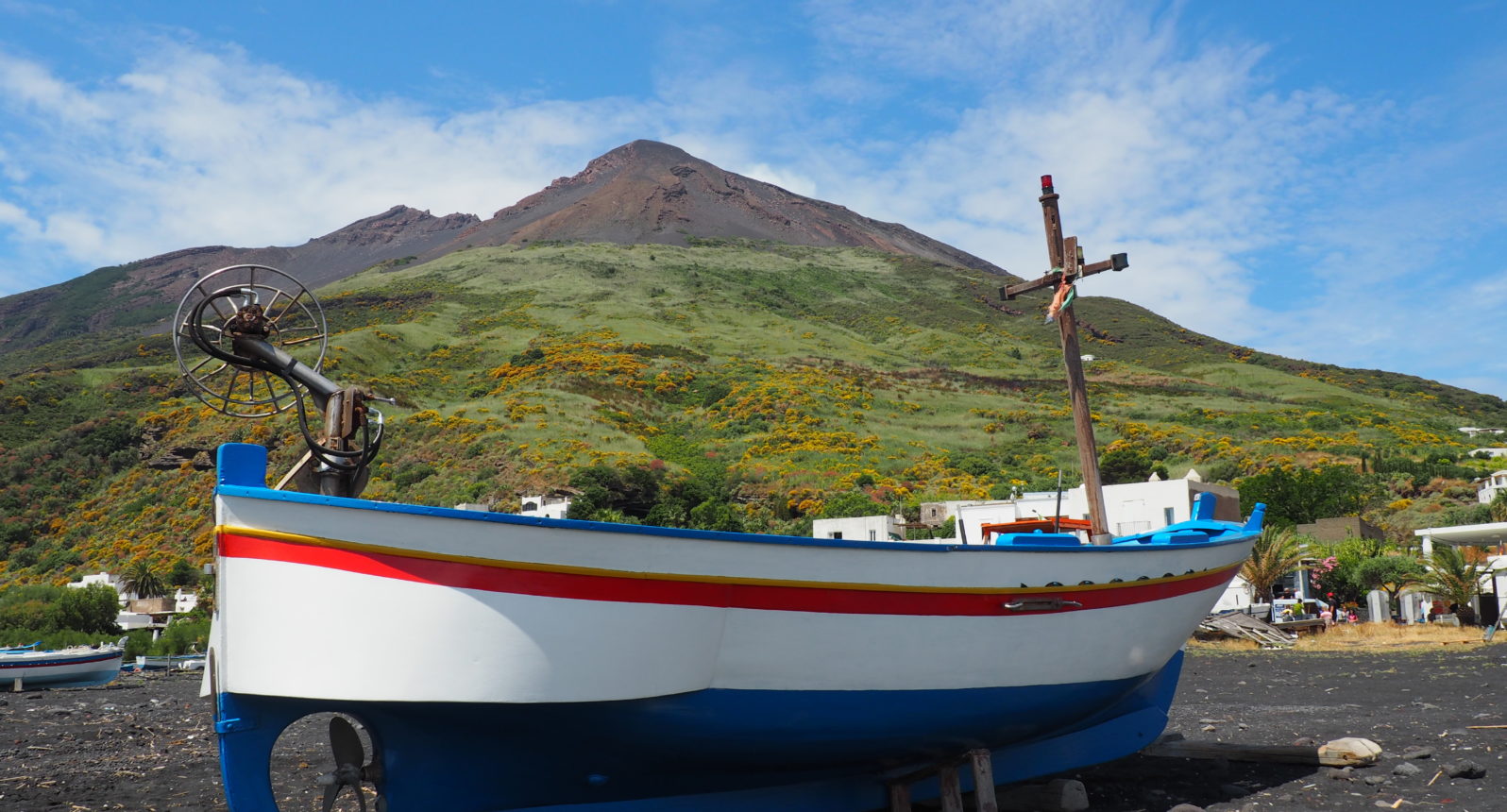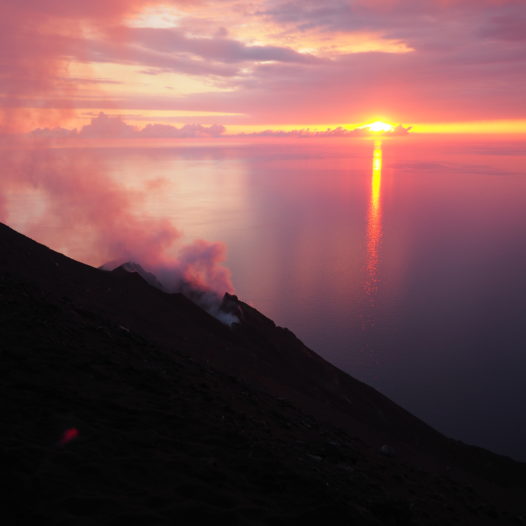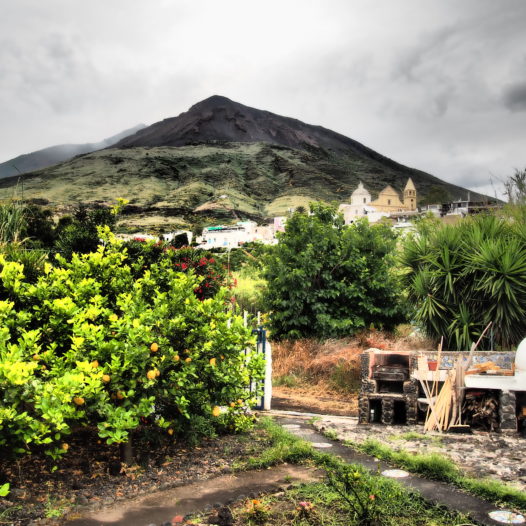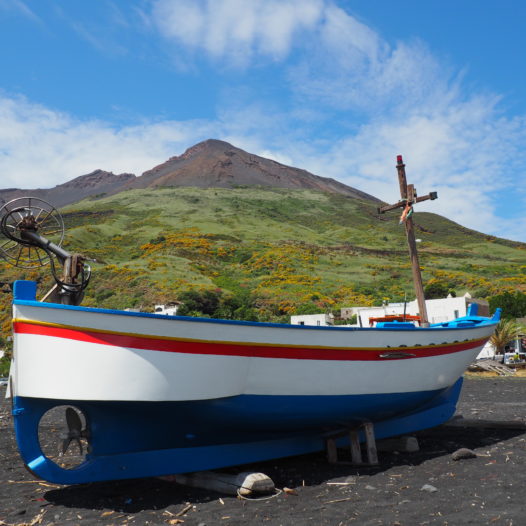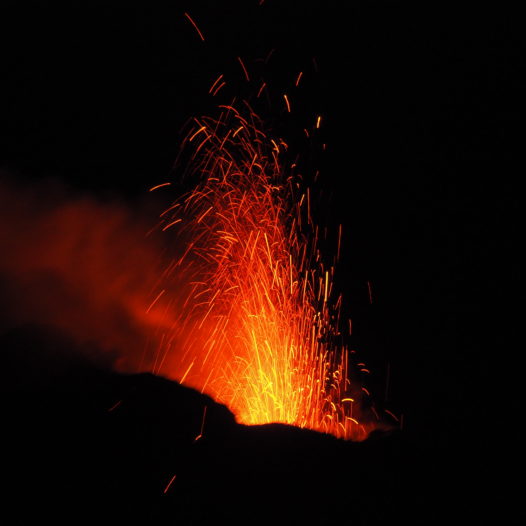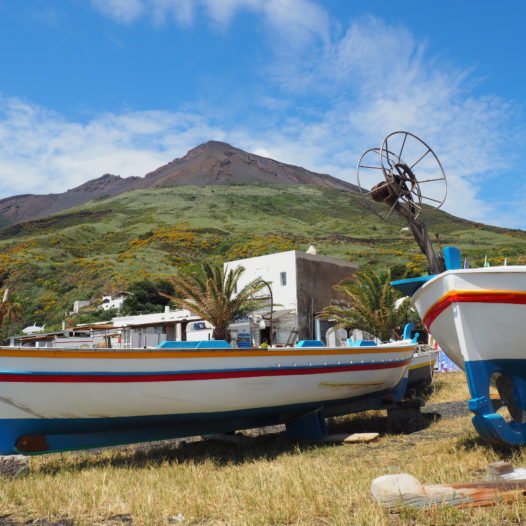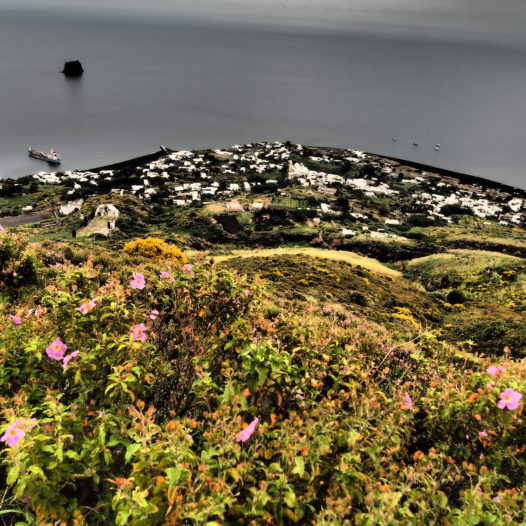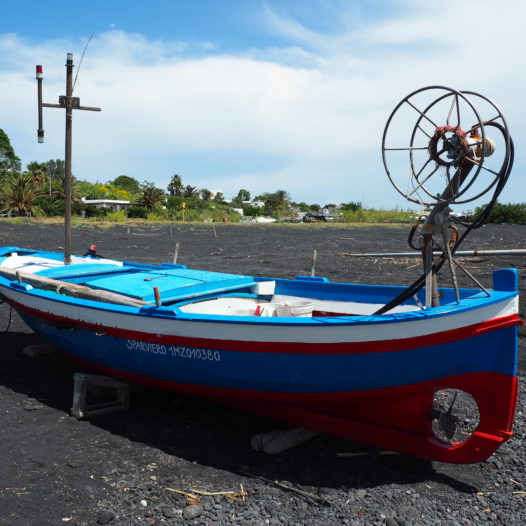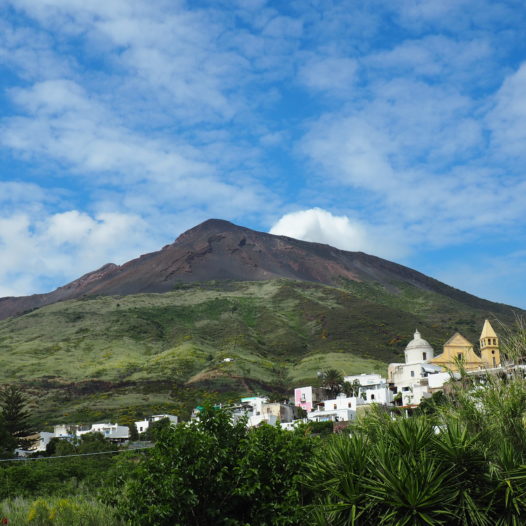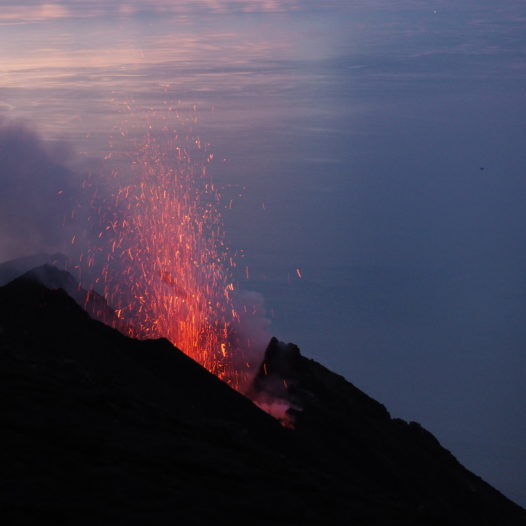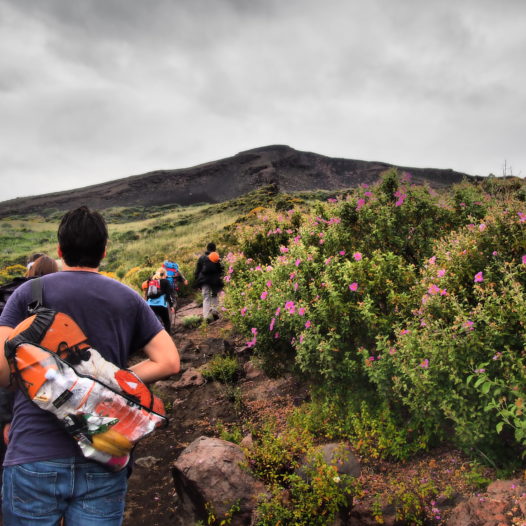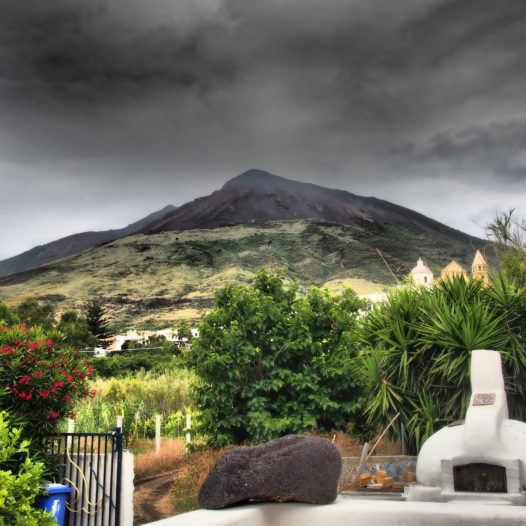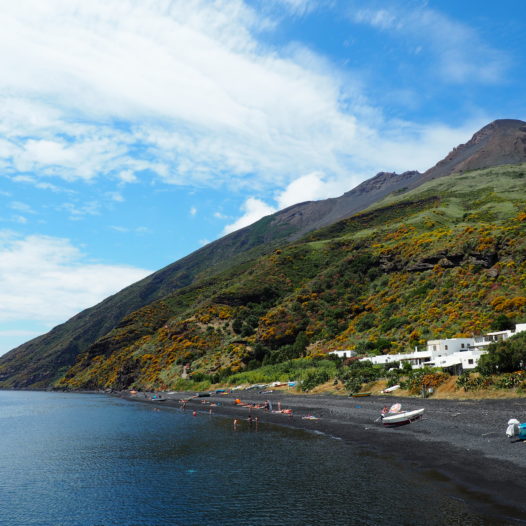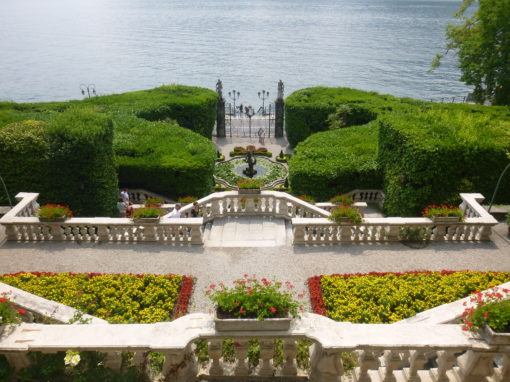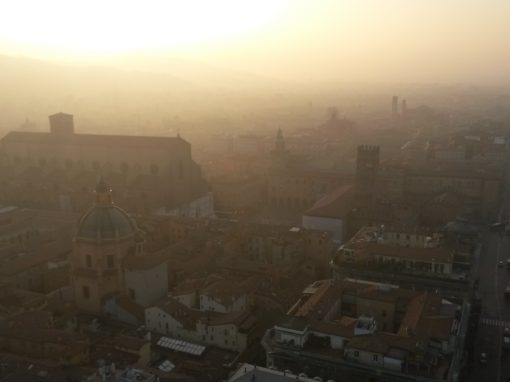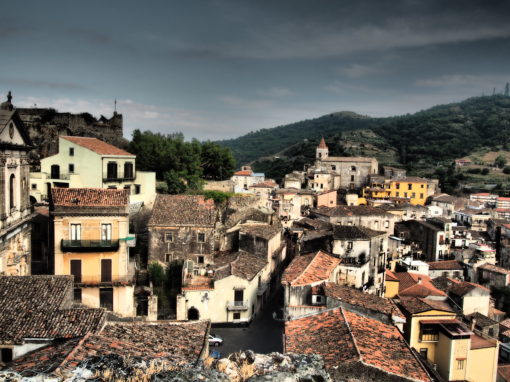Stromboli is perhaps exactly how you’d imagine a volcano to be; its cone is rising gorgeously, with flumes of lava and a lot of greenery and flowers at its base. A perfect drop of volcano in the ocean.
Stromboli’s epicenter has been erupting almost continuously since 1932. Since the eruptions never stop and are seen from far distances at night, the romans already nicknamed Stromboli “Lighthouse of the Mediterranean”. Funny thing right, to think that the romans had the same view on the island?
The volcano nowadays is only mildly active, meaning that it’s still possible for the 500 people on the island to live just right beneath the rumbling on its eastern corner.
So since the lava flow seems a never ending story, you’d think this would be terrifying enough to keep farrr away from the island. But none of it – Stromboli keeps on attracting people willing to live and visit here. Especially the artistic folks.
But then again, it’s not difficult to see why; white villas, cute cobblestone alleyways, the ever present bougainvillea and the dramatic black beaches with volcanic rock formations all make up for pretty postcard pictures. Also, there’s this mythical association of Stromboli. The island is said to be the fabled seat of Aeolus, the Greek ruler of the winds.
Apart from all this gorgeous things, life in here is really a bit difficult: food and drinking water have to be ferried in, there are no roads and therefore no cars, buses nor trains. Neither are there lights on the streets at night, which positively makes star- and lava-watching into a fine experience.
But perhaps that all adds to the charm of Stromboli.
It’s possible to witness the eruptions of the Stromboli from many parts of the island, included some spots close to the craters. The so-called ‘Strombolian eruptions’ are mild explosive events where gas bursts through the magma all the way to the surface, throwing bits of lava into the air. As soon as darkness begins to fall, the flame of the volcano becomes visible with intervals of 15 to 20 minutes. A great moment to be there! 🙂
Climbing the volcano is only permitted with an official guide and there’s a limit to the number of people allowed to visit the crater each day. Which is great, as there won’t be that many people on the top! Nevertheless, inform in advance if you know when you’d like to go!
